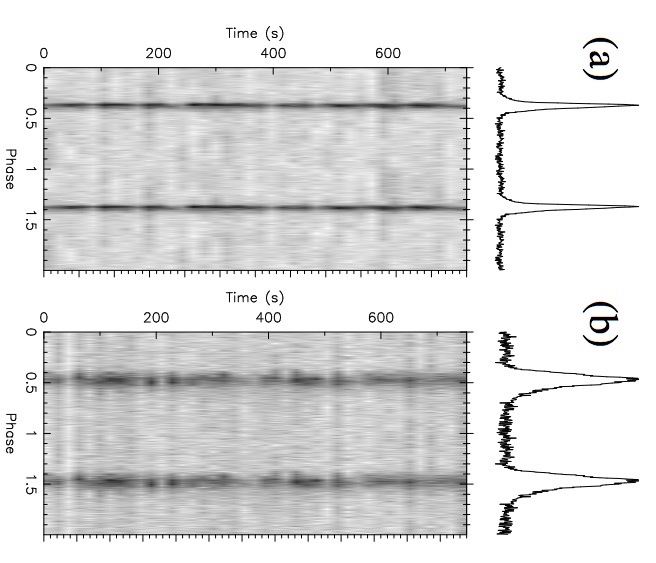| 30th of April 2018 |
|---|

|
| MeerKAT megnetar monitoring |
|
Magnetars are rotating neutron stars with extremely powerful magnetic
fields, which are characterised by periods of pulsar-like activity,
interspersed with periods of quiescence. The magnetar PSR J1622–4950
has previously displayed this behaviour but had been inactive
since early 2015. Regular monitoring with the Parkes telescope
discovered the magnetar was active again in April 2017, triggering
monitoring with the Parkes and MeerKAT radio telescopes, and number of
X-ray satellites. MeerKAT is a radio interferometer being built in
South Africa a precursor to the Square Kilometre Array, which will
consist of sixty-four 13.5 m diameter antennas located on baselines of
up to 8 km. The magnetar observations were obtained during the
commissioning phase and typically used a subset of 14 antennas and
some interim subsystems.
The radio monitoring revealed the radio flux density to be variable and approximately 100 times larger than during its dormant state. The torque on the neutron star was found to be varying rapidly and unsteadily, as is common for magnetars following an outburst, having changed by a factor of 7 within six months of reactivation. The image above shows radio pulse profiles of PSR J1622–4950 (a) Parkes at 3.1 GHz (with a bandwidth of 1 GHz) on 2017 April 5 and (b) MeerKAT at 1.3 GHz (with a useable bandwidth of 500 MHz) on April 27. The profiles are displayed (in arbitrary units) as a function of time and summed at the side, repeated twice. More details are available in the full paper Revival of the Magnetar PSR J1622–4950: Observations with MeerKAT, Parkes, XMM-Newton, Swift, Chandra, and NuSTAR by Camilo et al., published in The Astrophysical Journal. |